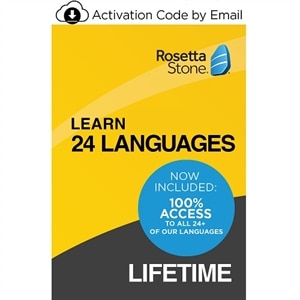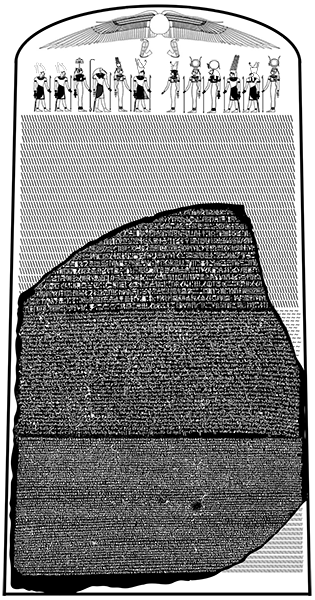
At some period after its arrival in London, the inscriptions were coloured in white chalk to make them more legible, and the remaining surface was covered with a layer of carnauba wax designed to protect it from visitors' fingers. found at Rosetta" in a contemporary catalogue of the artefacts discovered by the French expedition and surrendered to British troops in 1801. The Rosetta Stone is listed as "a stone of black granodiorite, bearing three inscriptions . The term 'Rosetta Stone' is now used to refer to the essential clue to a new field of knowledge. The Rosetta Stone is no longer unique, but it was the essential key to the modern understanding of ancient Egyptian literature and civilisation. Three other fragmentary copies of the same decree were discovered later, and several similar Egyptian bilingual or trilingual inscriptions are now known, including three slightly earlier Ptolemaic decrees: the Decree of Alexandria in 243 BC, the Decree of Canopus in 238 BC, and the Memphis decree of Ptolemy IV, c. Major advances in the decoding were recognition that the stone offered three versions of the same text (1799) that the demotic text used phonetic characters to spell foreign names (1802) that the hieroglyphic text did so as well, and had pervasive similarities to the demotic (1814) and that phonetic characters were also used to spell native Egyptian words (1822–1824). Jean-François Champollion announced the transliteration of the Egyptian scripts in Paris in 1822 it took longer still before scholars were able to read Ancient Egyptian inscriptions and literature confidently. Study of the decree was already underway when the first complete translation of the Greek text was published in 1803. It has been on public display at the British Museum almost continuously since 1802 and is the most visited object there. When the British defeated the French they took the stone to London under the Capitulation of Alexandria in 1801.

Lithographic copies and plaster casts soon began circulating among European museums and scholars. It was the first Ancient Egyptian bilingual text recovered in modern times, and it aroused widespread public interest with its potential to decipher this previously untranslated hieroglyphic script. It was discovered there in July 1799 by French officer Pierre-François Bouchard during the Napoleonic campaign in Egypt. It was probably moved in late antiquity or during the Mameluk period, and was eventually used as building material in the construction of Fort Julien near the town of Rashid ( Rosetta) in the Nile Delta.

The stone was carved during the Hellenistic period and is believed to have originally been displayed within a temple, possibly at nearby Sais.

The decree has only minor differences between the three versions, making the Rosetta Stone key to deciphering the Egyptian scripts. The top and middle texts are in Ancient Egyptian using hieroglyphic and Demotic scripts respectively, while the bottom is in Ancient Greek.

The Rosetta Stone is a granodiorite stele inscribed with three versions of a decree issued in Memphis, Egypt, in 196 BC during the Ptolemaic dynasty on behalf of King Ptolemy V Epiphanes. 1,123 by 757 by 284 millimetres (44.2 in × 29.8 in × 11.2 in)Īncient Egyptian hieroglyphs, Demotic script, and Greek script


 0 kommentar(er)
0 kommentar(er)
